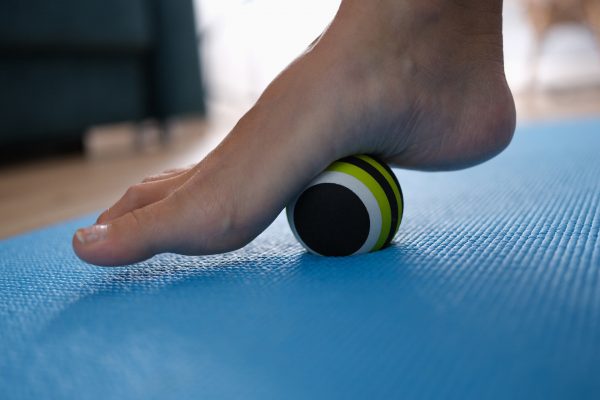There are many issues that can cause foot pain, and one of the most common is plantar fasciitis. This problem is so common that it’s seen in 7 to 10% of the population.
The condition is caused by strain, overuse, or injury to the plantar fascia, which is a tissue band that connects the toes to the heel. Physical therapy for plantar fasciitis can help alleviate the problem, and also reduce the chances of it coming back.
Here’s what to know about physical therapy stretches for plantar fasciitis.
Physical Therapy Exercises To Help With Plantar Fasciitis Foot Pain
Because physical therapy for foot pain frequently improves the way you feel, along with easing walking and moving without discomfort, it’s a great way to get started on a program that can help you reduce your plantar fasciitis foot pain. That’s especially true with heel and arch pain, which can be debilitating if you have a job or other activities where you need to be on your feet and walk a lot. Some of the most common exercises used to reduce problems with the plantar fascia include:
- Tennis Ball Rolling Stretch.
- Exercises With Calf Stretches, such as:
- Calf Stretches Against a Wall.
- Towel Curls/Extension.
- Gastrocnemius Stretch.
- Stretch on Step.
- Calf Stretches Against a Wall.
- Floor Sitting Ankle Inversion With Resistance.

Safety Precautions Before Doing Exercises for Heel and Arch Pain
If you decide to try physical therapy stretches for plantar fasciitis, there are a couple of things to keep in mind. First, remember that plantar fasciitis foot pain is caused by overuse or other repetitive motion injuries. If you couple the exercises listed here with the routine that originally caused your heel and arch pain, you could potentially make the problem worse. To reduce the chances of that, make sure you’re resting your ankles and feet between exercises, and not overexerting or adding more stress.
After exercise, ice your feet. Also consider the use of muscle pain creams, like Biofreeze or Aspercreme, to help give you a reduction in discomfort as you heal.
Plantar fasciitis foot pain is a serious issue and one that can make it difficult to get things done. Fortunately, with the right care, it’s also something you can frequently treat at home. Physical therapy for plantar fasciitis helps — and makes it less likely that you’ll need to seek medical intervention in order to see improvement in your condition.
When To See a Podiatrist for Plantar Fasciitis
There are a few times when physical therapy for foot pain may not be enough, and you’ll need to have your heel and arch pain treated by a professional. If you’re finding that the at-home physical therapy stretches for plantar fasciitis aren’t enough, reaching out to your podiatrist can be the next step in improving your health. So, when do you really need to do that? Difficulty walking is one of the biggest symptoms of needing to seek out a podiatrist. If you can’t get around, you need professional treatment.
Additionally, you’ll want to see a podiatrist if plantar fasciitis recurs. Without medical treatment, it’s a condition that will normally resolve itself. That can take anywhere from six to 18 months, depending on how you care for your feet, how much exercise you get, and other factors. But studies also show that people who have experienced plantar fasciitis in the past are more likely to get it in the future. If it comes back after it’s cleared up on its own, seeking out the advice of a podiatrist can be the next step in your journey.
Reach Out for Help and Support Today
At Foot & Ankle Group, we’re here to help. We know that plantar fasciitis and other conditions that affect the feet can make it very difficult to complete daily life tasks, and get around safely and securely.
You don’t have to deal with the pain and frustration that can come with these kinds of issues. Instead, you can focus on getting back on your feet faster, when you have the right treatment and support.
Contact us today and get the help you need, to make sure plantar fasciitis doesn’t de”feet” you any longer!
Categorized in: Blog
Comments are closed